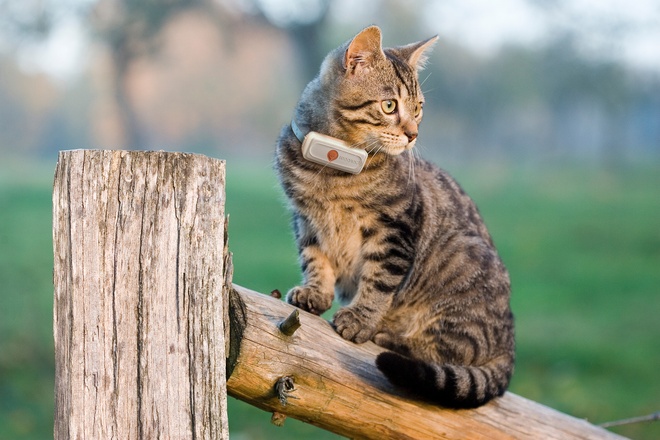Survey of over 2,000 cat owners from six European countries confirms findings of a previous University of Vienna study

Reading time : 3 min
Berlin/Paris, May 19, 2025 - A comprehensive study with more than 2,000 cat owners from Germany, France, Belgium, Spain, Italy, and the United Kingdom has clearly proven that the widespread fear of accidents caused by cat collars is unfounded. The investigation, which builds on a University of Vienna study commissioned by TASSO in 2021, shows: Less than one percent (0.47%) of surveyed cat owners experienced incidents with collars – and none of these required a veterinary visit or resulted in serious injuries.
Almost half of all respondents (48.18%) reported having hesitated to put a collar on their cat – mainly out of fear that the animal might get caught somewhere. According to the study, however, this concern is completely unfounded. Out of over 2,000 respondents, only nine people reported minor incidents related to wearing a collar.
"The results are clear: The widespread belief that collars can be life-threatening for cats is a myth that is refuted by our data," explains Adrien Harmel, CMO of Weenect. "On the contrary – the real danger for cats lies elsewhere."
The study identifies the actual main dangers for outdoor cats. More than one in three cats gets into a fight with another animal (34.46%), followed by being trapped somewhere (27.07%), disappearing or getting lost (21.86%), and traffic accidents (10.83%).
Young adult cats between one and five years of age are particularly at risk, with a good two-thirds of all young cats (68.2%) having already experienced an accident. For comparison: For cats under one year, the rate is 47.5%, for cats over 10 years it's 54.8%.
The study results also show that collars – especially those with GPS functionality – are seen by users as a valuable safety tool. 96% of respondents whose cat wears a collar are satisfied with it. GPS tracking is cited as the main reason for use (57.82%), followed by identification through tags or phone numbers (20.58%) and better visibility at night (14.39%).
"A GPS collar can help minimize exactly the real dangers that cats are actually exposed to," explains Adrien Harmel. "When a cat disappears or is locked somewhere, GPS technology can be life-saving. Care should be taken to attach the GPS tracker to modern safety collars, especially to elastic ones or those with an automatic opening mechanism. Only in this way can cat owners help protect their animals from the real dangers."
A surprising result of the study debunks another widespread myth: Contrary to popular belief, cats in the countryside live more dangerously than in the city:
One reason for the increased danger in rural areas could be that cats often roam over greater distances and expose themselves to various hazards. Proximity to busy roads remains a significant risk factor: 12.21% of cats living near busy roads have already been involved in a traffic accident – almost twice as many as cats living further away from roads.n.
The study also dispels the notion that indoor cats are completely protected. One in four indoor cats (25.32%) has already experienced an accident in the household. Almost half of the cats (47.5%) fall from furniture or balconies. In second place with 17.5% is the swallowing of dangerous objects, followed by poisoning from plants or household products (12.5%), accidents with household appliances (10%), accidents with people or other animals (7.5%), and choking or strangulation hazards, e.g., from plastic bags (5%).
These figures clearly show: Even in the supposed safety of their own four walls, cats are not protected from accidents.
The study results confirm and expand on the findings of the University of Vienna study commissioned by TASSO: Collars do not pose a significant risk to cats. On the contrary – they can help reduce the actual dangers for outdoor cats.
The survey was conducted among more than 2,000 cat owners from Germany, France, Belgium, Spain, Italy, and the United Kingdom. Participants were recruited partly through Weenect customers and partly through a Meta campaign (Facebook and Instagram). The respondents come from different environments (urban and rural) and keep both outdoor and indoor cats.
Find out more about the survey results here.
Click on the buttons below to save this press release as a PDF or return to the Pressroom.